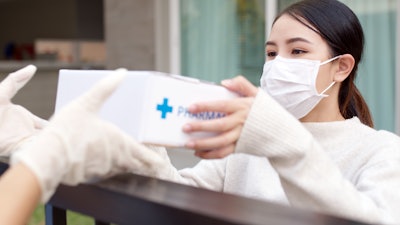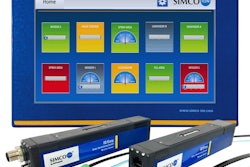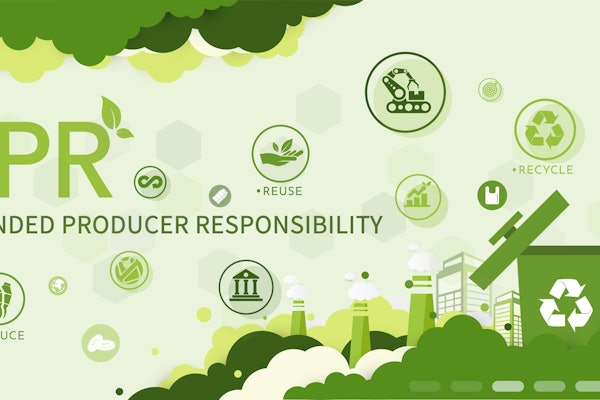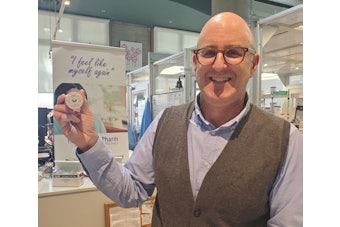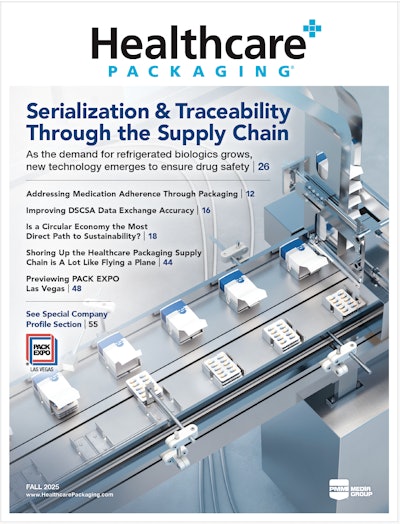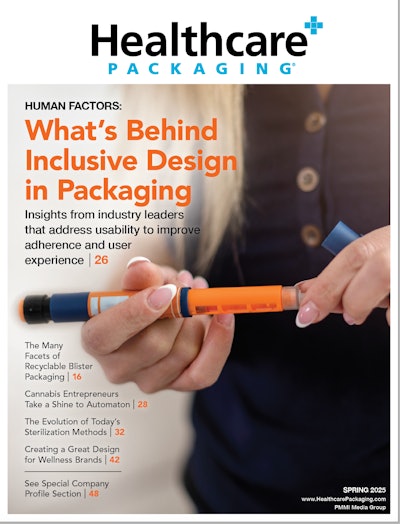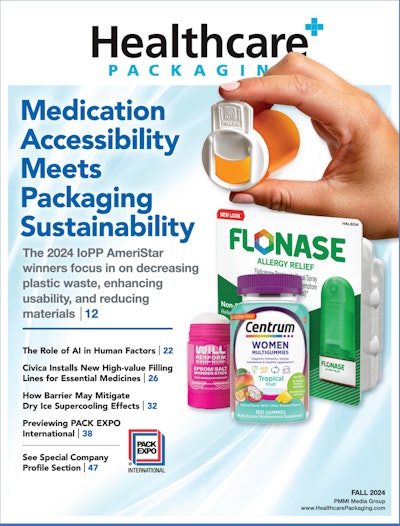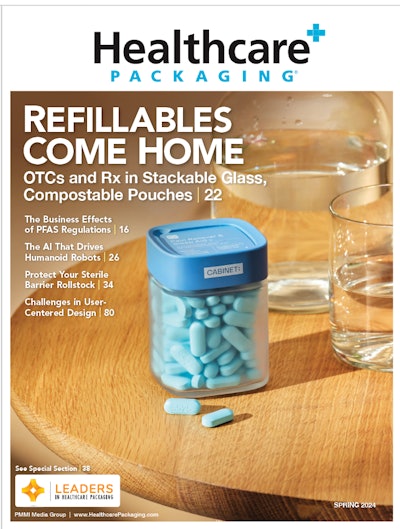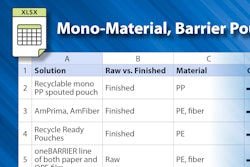Many patients with rare diseases use temperature-controlled therapies to manage symptoms. With smaller patient populations and batch volumes, special handling is often required to ensure these expensive drugs arrive safely. Brandon Salke, Pharm.D, is pharmacist-in-charge at Optime Care, a specialty pharmacy, distribution, and patient management organization focusing on rare, orphan and ultra-orphan products. He discusses that while not all patients in these populations have mobility issues, these therapies have different last mile and two-way communication practices compared to traditional drugs.
1. Shipment communication
Salke notes the extra care in delivering to patients with rare and orphan diseases. They call the patients to be sure they’ll be home to sign for packages and let them know they can ship to their work or a relative’s home if that’s more convenient. “We can't have those packages sitting out on the doorstep–you don't want to leave a $50,000 pack out in 100° Arizona heat,” he says. “The challenge is making sure that the product is getting to the patient on time, intact. We go through such depth to ensure the patient will actually be there because launching an exception, calling FedEx for reattempt deliveries—it becomes very cumbersome, and not streamlined for the patient whatsoever.”
For those with mobility issues, communication with the courier is critical. “We have to give instructions to FedEx, because if someone is in a wheelchair and they can't get to their door quickly, we have to make sure FedEx will wait for them to answer versus a quick door knock, waiting three seconds, and heading back to their truck because they’re trying to finish their route. We take the time to ensure instructions are disseminated to FedEx on what we need from them out of a delivery to best serve the patients,” he says.
2. Dry ice handling by patients
Generally, cell and gene therapy manufacturers are acutely aware of the unique packaging and logistics requirements associated with shipping temperature-controlled lots. They're often very involved in how a drug is transported through the supply chain, including the last mile.
“But sometimes what gets lost—specific to cell and gene therapy, and we even saw it with COVID vaccines—is they had to be stored at such cold temperatures, sub 60 or even sub 80, which has implications both for how you're packing that medication and what that means for the patient when they receive it. If I'm shipping somebody dry ice, they have to be very careful with handling when they receive it,” Salke says. “The quality or supply chain team may not be putting their patient cap on as much as they’re putting their product integrity cap on, and they might not think about how a dry ice shipment is going to affect the patient. I think the patient opening the shipment is the consideration that might get overlooked in some cases.”
3. Traceability and authentication understanding
Dispensers are brought into the DSCSA discussion more regularly now, but the patients themselves are largely an afterthought in discussions of supply chain security.
“DSCSA traceability has a whole slew of rules that are still coming down the pipeline. In DSCSA conversations, everyone is worried about ‘How do we do it? How do we maintain it?’ Patients probably aren't even aware of these activities and why a serial number is there. I think the explanation will give a patient peace of mind that they've received an authentic product,” Salke notes. “And this is especially the case when you see drug recalls because, for example, a batch had shards of glass and it was manufactured outside of the U.S. News like that gives people pause, and that makes them hesitant and question the drug manufacturing system as a whole. They’re taking rare drugs that, quite frankly, many have never heard of. They're hesitant already. Traceability will give peace of mind, especially when it comes to these small patient populations.”
Speaking of recalls, Salke sees that more granular traceability will make recalls faster and more efficient. Dispensers will know who received what serial number and contact them to get it back, meaning they won’t have to send blanket recalls for multiple lots and worry patients who are unaffected.
Whether a package has QR codes or other links is up to individual manufacturers. “But we've shipped things in the package like brochures and flyers with QR codes that allow patients to scan and get linked up to an educational website or the advocacy group for their specific disease,” Salke says. “QR codes are obviously everywhere in our society. There's a lot of benefit to using them from an education standpoint, and even to take them to a survey to help report disease-specific outcomes. We’ll send that back to the pharmacy to capture that information and make good decisions when working with the manufacturer or prescribers on that therapy.”
4. Patient education on the therapy
Treatment in the home setting continues to grow, meaning patients or caregivers without healthcare backgrounds are administering drugs often biologics via a medical device. At Optime Care, they follow a patient-first philosophy. “Everything we do—all the decisions, all the parts in the process, we do it with the patient in mind. When the Optime team performs intake with a patient and they're new to a medication, a dose, or a specific delivery device, we take the time to educate that patient or caregiver until they feel competent that they understand why they're on it, how to use it, and when there could be issues or problems,” Salke says.
Should an issue arise when the office is closed, they also offer on-call services 24/7 where a pharmacist is paged to get back with them quickly and resolve any issues or problems. He adds, “By having a robust education system in place, we find that the education gaps for patients are very minimal. But we do have fallbacks for the patient should they ever need something. We’re always available to answer them.”
5. Getting involved with patient populations
In a traditional pharmaceutical setting, most patient communication takes place between the pharmacy and the patient, and not the manufacturer that works with the wholesaler. But Salke says when you're talking about rare and orphan diseases, life science manufacturers understand there is a need for some hand-holding—high-service, high-touch experiences for the patients.
“A lot of manufacturers want the best-in-class service models, and work with a pharmacy in lockstep to create robust care and significantly impact the patients in rare communities,” he says. “If a manufacturer wants to be even more involved with patients, one way to show their support for a disease state is to work with the patient advocacy group, such as the US Hereditary Angioedema Association (HAEA), which is a big one.”
Getting involved with an organization not only shows the manufacturer’s commitment to their patients, but it allows them to communicate on a different level, which patients usually appreciate. “It shows that they're being cared for. They're just not another number. Generally, for a manufacturer to do that, they have to spend a bit to get the benefit back,” Salke notes. “Manufacturers can also consider setting up an advocacy group of their own. We've seen manufacturers set up a team of nurse advocates or pharmacist advocates. If the manufacturer has a consented program—meaning the patient has opted in to share personal information with the manufacturer—these advocates can reach out to the patient and talk about their journey and challenges. That's just another level of support that manufacturers can provide.”
Along with advocate programs, Salke says mentoring programs exist where the manufacturer can connect newly diagnosed patients (or patients newer to the medication) to patients more experienced with the disease state. “These are a few ways manufacturers can help communicate with their patients so that they feel supported. In small patient populations, that’s what the patients and caregivers really want to feel… like somebody there has their back and cares about them. I think certain manufacturers have been a lot quicker on the uptake. Over the next probably five or 10 years, you're going to see more manufacturers go this route where they want to sell on services to support these patients.
“At the end of the day, if you’re serving a rare disease, you only have so many patients in the United States. At some level, we have to talk about the dollars and for the manufacturer, they can't afford to lose a patient. So, they need to make sure that they have done all they can to support them.”
Software and machinery as a service have been growing for years. In a way, this philosophy is parallel to what's happening with patient populations. It’s not enough to sell machinery or platforms to pharma manufacturers—or medication to patients—there’s much more need for collaboration and support. (Read about robots-as-a-service for med device pad printing here.)
6. Avoid the maze: touchpoints and handling
We’ve all heard the motivational quotes eschewing the mindset of “We’ve always done it this way.” And Salke says this is something to look out for in pharma. “Specifically, when you're talking about rare and orphan diseases, small patient populations or small drug volumes, the biggest pitfall we see manufacturers fall into is when they do things traditionally,” he explains. “They have multiple vendors and systems set up. They create what we call a maze for patients—it’s a system where there are 20 or 30 touchpoints along the way. It causes a lot of confusion, and it's not streamlined. Financially, it’s disadvantageous for manufacturers because they spend on extra vendors that they don't need. That is the biggest pitfall I see in regard to rare and orphan patient populations.”
He recommends manufacturers for rare disease therapies look for a partner with a high-service level model that can provide end-to-end solutions for 95% of what’s needed. “I leave that 5% off because there are some things that a specialty pharmacy can't do, that a manufacturer will need to work through. But as it pertains to the patient, having a full end-to-end solution is what's going to set you apart and offer the most positive impact on this patient population.”
For a patient, navigating the various systems to get what they need in the U.S. can be exhausting. In a traditional model, there’s typically a hub for enrollment, which can take two to three weeks to contact the patient, work through a prior authorization, and get everything approved to then send to a pharmacy. The pharmacy has to perform intake on the patient, followed by a benefits investigation to make sure everything is authorized before they do a coordination of care.
He adds, “To get a refill, a patient might have to call back, go through a prompter, and not get the same person. Nothing seems personal. Those kinds of things and delays in trying to get medication, the process is very cumbersome.”
This process can differ if the manufacturer works with a single pharmacy. “In our case, we receive the prescription, we handle everything in-house, including the investigation and prior authorization, to streamline everything. We have KPIs to support getting medications turned around within 48 hours. We've reduced the time and the burden for the patient,” he says.
Optime has care coordinators regionally aligned to state zip codes, so patients and their prescribing doctors talk to the same person every single time. Dealing with one person over the course of many interactions, lets them build a good reputation with the patient. “The patient feels like they have somebody there that's supporting them. A lot of our manufacturers will even work with us to create bio cards with care coordinator pictures, sometimes on a magnet. When we send a shipment out to a new patient in a given territory, we put a bio of Stephanie in there if that’s her patient. They put it on their fridge with her number. They know who she is, a few details about her, and it organically fosters a good relationship,” Salke says.
Coordinators also don’t have time quotas on calls, so time on the phone can be tailored to the patient needs.
Beyond the service, Salke notes that this model can deliver better data—it’s coming from one source vs different pharmacies, and a hub might report differently to different aggregators. “That data allows better decisions for the manufacturer. Maybe we see patients are dropping off at month four because of certain adverse events,” he says. “So, manufacturers can work with the pharmacy to get some kind of intervention to help these patients get through that and figure out the challenge. The patient communication, the data, the support, it all keeps a more compliant patient. Especially when it comes to a rare and orphan disease, it may be genetic in nature and the patient will have it for life. We have to move forward making sure the patient is compliant, because that is going to yield the best possible outcome in their disease state and in their life.”
